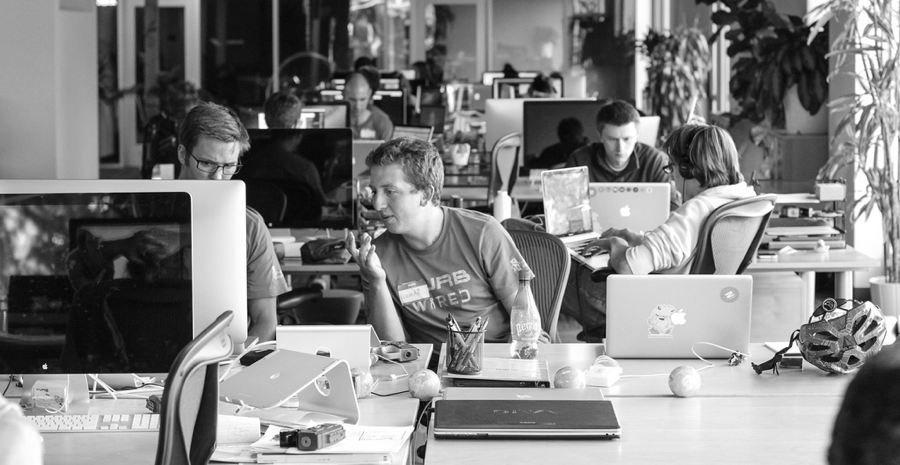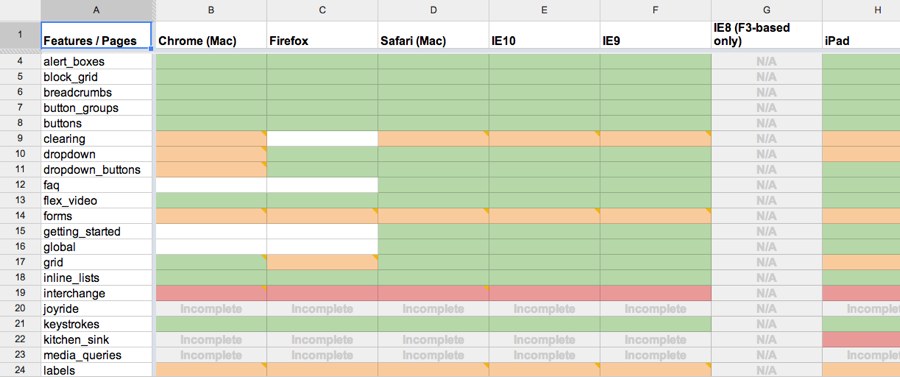Foundation 5 is upon us (like, tomorrow), and it is a faster, stronger, better Foundation. That's great for the millions of designers and developers using it in their workflow. More users mean more exposure to a different type of user — a type that is often overlooked by framework designers.
Larger teams have different needs from a lone designer or developer. There are a lot more variables for them to juggle: many people, each with their own goals; dealing with rigid business goals; and dealing with legacy code.
We're addressing those needs with Foundation 5 and beyond in several different ways, each focusing on a particular problem. We've kept Foundation true to its core value — to be a smarter way to code.
A Culture of Smart Coding
Create a culture of smart coding in your company. Foundation is mobile first, and coding the Foundation way will introduce your team to better coding practices resulting in leaner, meaner, code. We've seen this first-hand with larger teams and companies.
For example, we recently helped a client wireframe their entire application, some 50 unique screens, with Foundation. And that gave their development team a common starting point to build upon. The bonus: It helped them put together all the interactions and workflows within a short period of time. Which allowed them to focus on iteration and design problems rather than putting an interface together.
But it's not just our clients. We're seeing large organizations, such as the Washington Post, adopt Foundation. The Post uses Foundation to help them prototype and cut out day-to-day drudgery, such as not having to start from scratch each time they build a site. But it's also taught their front-end developers to write better code, Mobile Design Director Joey Marburger told us. Developers can work on shared code and trust that it'll work. It's allowed the paper to establish better development standards for both prototyping and building products.
How Foundation Fits Within ZURB
A framework, such as Foundation, is crucial for a company like ZURB. Why? Because it allows our business to build consistency in how we approach our development effort. Here are some ways it's helped us.
It gives us a framework to rapidly prototype our products and ensure they work across devices.

Our team and volunteers using Foundation during this year's ZURBwired.
We use Foundation for our yearly 24-hour design marathon, ZURBwired. During the event, there's a cadre of volunteers that works alongside our team. Foundation becomes the common glue that allows us to quickly jump into pages and commit code. With the framework, we're able to move swiftly from sketch to prototype to production code without missing a beat.
Our consistent code base reduces our overhead so we don't have to maintain code for separate mobile and desktop sites.
We'll admit we're still moving to a mobile-first approach across our projects. While it's not always possible, the fact that Foundation plays nicely between screen sizes is huge for us. It's easy for us to switch between a mobile-first approach and designing from desktop down.
Finally, Foundation also brings standards in the way an organization QAs their products.

Our QA spreadsheet for the Foundation 5 marketing site and docs
We battle test Foundation daily at ZURB on every client and internal project. From code to QA, we've been able to create consistency in our process. In fact, we're in the midst of that process right now as we work to get Foundation 5 out the door. When 10 people are working on QA, it makes it easier to understand the issues. For Foundation 5, we have a large spreadsheet that people can easily follow and contribute to (see above).
Those are some of the ways Foundation has helped us out. We'd love to hear how your organization is using Foundation and how it fits in your workflow. Hit us up at [email protected]. Stay tuned for the release — it's gonna be a blast!
